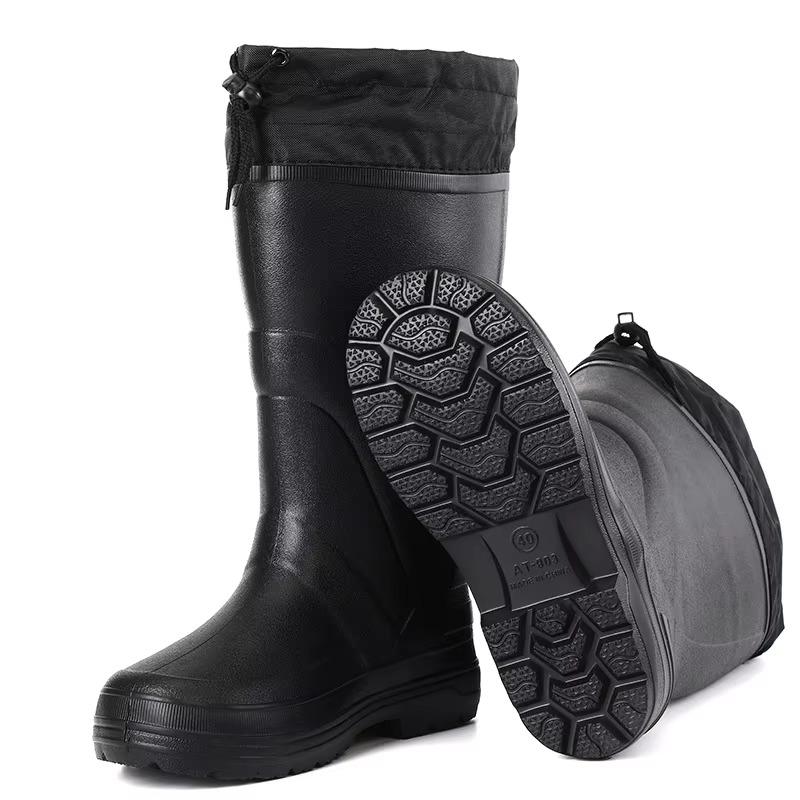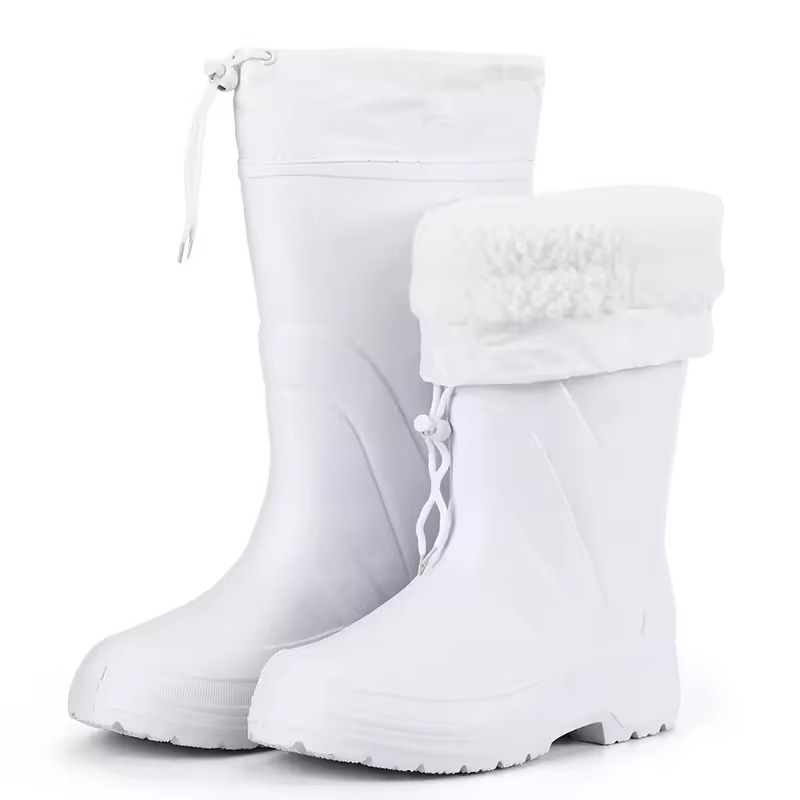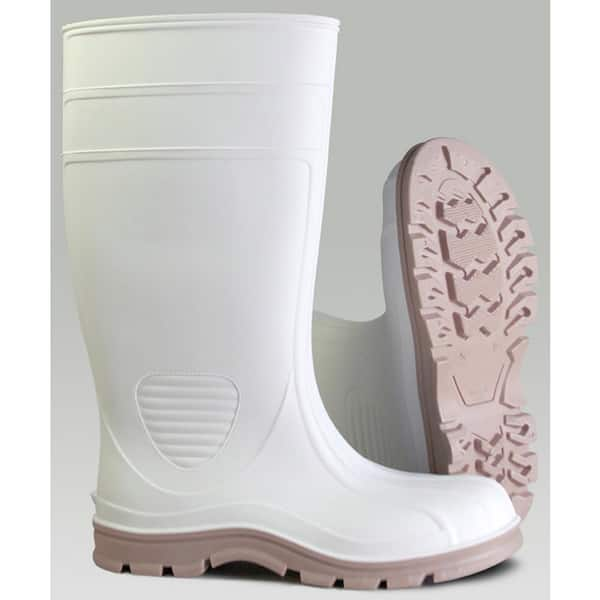Overview of Shrimp Boots
Shrimp boots are essential for those who harvest seafood. They protect your feet from water, mud, and rough terrain. These boots are typically made from waterproof materials. They are designed to provide not only protection but also comfort for long hours of work. Shrimp boots feature non-slip soles to ensure safety on slippery surfaces. The height and tightness of these boots can prevent water from getting in. They are crucial for anyone working in the seafood industry or in wet environments.

Key Features to Consider in Shrimp Boots
When selecting shrimp boots, you must consider several key features to ensure optimal performance and safety.
Material and Durability
Choose boots made from high-quality, waterproof materials such as PVC or rubber. They should withstand harsh marine environments and resist punctures. Durability ensures that the boots last longer even with daily use.
Comfort and Fit
Comfort is crucial for long hours on your feet. Look for boots with cushioned insoles and enough room to prevent cramping. A proper fit means snug but not tight around your calves to keep water out.
Slip Resistance and Safety Features
Slip-resistant soles are a must for slick surfaces. Additional safety features might include steel toes for protection from heavy equipment. Make sure your shrimp boots have good traction and appropriate safety features for your work environment.
The Best Materials for Shrimp Boots
When considering the best materials for shrimp boots, durability, and protection are key. The most common materials used are PVC (polyvinyl chloride) and rubber, both known for their waterproof and resilient properties.
PVC: Lightweight and Cost-Effective
PVC shrimp boots offer a balance between protection and comfort. They are lightweight, making it easier to move around during long hours at sea or in muddy fields. Additionally, PVC is cost-effective, allowing for frequent replacement without significant financial impact.
Rubber: Sturdy and Puncture-Resistant
Rubber is another popular material for shrimp boots. It is thicker than PVC, which provides an extra layer of defense against sharp objects. Rubber boots tend to be more puncture-resistant, offering better durability over time.
Neoprene: Comfort and Flexibility
Neoprene is often used as a lining material for shrimp boots, enhancing comfort and flexibility. It helps keep the feet warm in colder waters and adds a cushioning effect for extended wear.
Choosing the right material for your shrimp boots involves assessing the work environment and your specific needs. Consider the trade-off between durability and comfort, and the type of sea or wetlands you’ll be working in. Each material has its strengths, so select the one that aligns most closely with your priorities for maximum efficiency and safety.

How to Choose the Perfect Fit
When selecting the right shrimp boots, finding the perfect fit is essential. Here are the steps to ensure you choose boots that fit well and provide necessary comfort for extensive use.
Measure Your Feet Accurately
Use a ruler or a measuring tape to get your foot size right. Measure both feet, as sizes can differ. Do this at the end of the day, when your feet are largest.
Consider Your Socks
Think about the socks you’ll wear with your shrimp boots. Thicker socks need more room, so choose boots with a little extra space.
Check for Adjustable Features
Look for boots with adjustable straps or gussets. These will let you tighten or loosen the fit based on your needs.
Try on Multiple Sizes
If possible, try on different sizes to see what feels best. Walk around to test the fit and comfort. Your toes shouldn’t touch the boot’s front.
Look for Signs of a Good Fit
A good fit means no heel slippage and a snug, not tight, feel around the ankle and calf. You should be able to move freely without discomfort.
Mind the Boot Height
Ensure the boots are high enough to keep water out but not too high that they restrict movement. The top of the boots should fit nicely under or over your waterproof trousers.
By following these guidelines, you can ensure that your shrimp boots will provide the support, protection, and comfort you need for long hours of work in wet conditions. Remember, the right fit is crucial for preventing injuries and allowing you to focus on the task at hand.
Top Brands for Shrimp Boots
When shopping for shrimp boots, it’s important to consider brands with a strong reputation. Top brands combine quality materials with craftsmanship to ensure safety and durability. They often offer a range of features tailored for the harsh conditions faced by seafood harvesters.
Xtratuf: Renowned for Quality
Xtratuf stands out with boots known for their rugged build and comfort. They use neoprene for flexibility and a secure grip on wet decks. Their designs are a favorite among professionals in the industry.
Servus: Durable and Reliable
Servus offers durable PVC and rubber boots that stand the test of time. They’re designed for maximum protection, with soles that provide excellent traction for slippery terrains.
Bogs: Innovative and Comfort-Oriented
Bogs focuses on innovative technology for warmth and comfort. Their boots often feature easy-to-clean surfaces and cushioned footbeds, making them ideal for those long days in the water.
Honeywell: Trusted Across Industries
Honeywell shrimp boots are known for their quality construction and safety features. They’re a solid choice for workers looking for boots with steel toes and slip-resistant soles.
LaCrosse: Balancing Tradition and Technology
LaCrosse combines traditional boot-making techniques with modern technologies. Their shrimp boots are well-regarded for durability and fit, offering versatility for various work environments.
Remember to look for the unique needs of your working conditions when selecting a brand. Trust in these established names that strike a balance between comfort, durability, and safety. With the right pair, you spend less time worrying about your feet and more time focused on the harvest.
Maintenance and Care for Shrimp Boots
To keep your shrimp boots in top condition, follow these maintenance and care tips. Good care extends your boots’ life and maintains their performance. Neglect can lead to wear, tear, and reduced protection.
Clean Regularly
After each use, rinse your boots off with fresh water. Remove mud, salt, or debris. This prevents material breakdown. Wipe them down and let them air dry.

Store Properly
Keep your boots in a cool, dry place. Avoid direct sunlight or heat sources. Heat can warp the material and cause damage.
Inspect for Damage
Check your boots often for cracks or punctures. Early detection means you can repair or replace them before they fail.
Use Proper Cleaners
Only use cleaners safe for rubber or PVC. Harsh chemicals can degrade your boots faster. Mild soap and water are often best.
Condition the Material
Certain boots benefit from conditioning. Products designed for rubber or PVC can keep them flexible and prevent cracking.
Taking care of your shrimp boots is simple but vital. It ensures they remain effective for every seafood harvesting task. Remember, investing time in boot care is investing in your safety and comfort.
Real-World Applications: Why Quality Boots Matter
Choosing the right shrimp boots is crucial for many reasons. High-quality boots can significantly affect your safety and productivity. Below are the key reasons why investing in superior shrimp boots matters in real-world scenarios:
Safety in Harsh Conditions
In the seafood harvesting industry, workers often face slippery, uneven, and wet surfaces. Quality shrimp boots with slip-resistant soles and durable material reduce the risk of falls and injuries.
Longevity and Cost-Effectiveness
Durable materials like PVC and rubber withstand harsh environments, extending the life of the boots. While high-quality boots might cost more upfront, their longevity makes them more cost-effective over time.
Comfort During Long Hours
The right boots offer comfort that is essential during long work hours. Well-fitting boots with cushioned insoles and flexible materials keep feet comfortable, reducing fatigue.
Enhanced Performance
With the right footwear, workers can move confidently and efficiently. This enhances overall performance and productivity in tough working conditions.
In summary, quality shrimp boots are not just a gear choice—they are a crucial investment in safety, efficiency, and comfort.